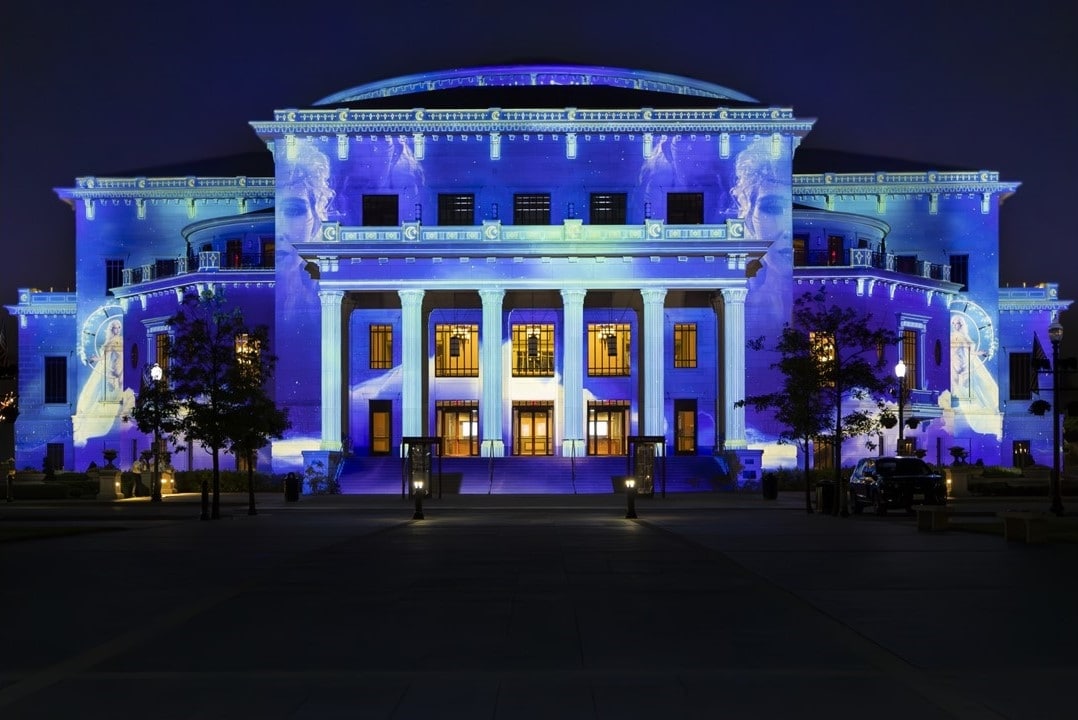

Details
Blockhouse Studios leveraged 12 Epson EB-PU2220B 20,000-lumen large venue laser projectors as part of a permanent projection mapping display system to light up the Carter Green Palladium in Carmel, IN. Epson projection technology was chosen to immerse the audience in the story of the three children of Titan—Selene, Eos, and Helios—and light up the 151,000-square-foot Palladium with 240,000 lumens of brightness from the Epson projectors.
The first projection-mapped art installation, “EOS: The First Dawn,” launched on Aug. 31, taking visitors through a serene and compelling visual experience via projection mapping and illuminated effects. Inspired by the classical temple architecture of the ancient Greeks and Romans, Blockhouse Studios embraced the Palladium’s foundational influence for “EOS: The First Dawn,” keeping it at the forefront of design when combining inspiration from centuries-old architecture with a modern projection experience.
“So much goes on behind the scenes for a project like this, from concept and design to animation and post-production, to actual onsite mapping and rigging of the projectors,” said Kevin Winkler, owner, Blockhouse Studios. “In addition to all of our hard work, it required technology that could reproduce the content how we intended it to be viewed. With bright colors and sharp details to ensure the building’s architecture was highlighted, a story was told, and viewers were engaged on many levels. We wanted that ‘wow factor’ and the Epson projectors delivered at this massive scale.”
In late 2022, the city of Carmel and the Carmel Redevelopment Commission (CRC) approached Blockhouse Studios to create a permanent viewing system for architectural cinema at the Carter Green Palladium, a 1,500-seat concert hall and home of the Center for the Performing Arts. A custom-made, audiovisual system, built and named by Blockhouse Studios, the “Palladiscope” needed projectors that could deliver an immense amount of brightness with vibrant colors and the ability to withstand extreme weather conditions.
The Palladiscope was built to take traditional content viewing beyond a screen and onto the physical architecture of the Palladium. “As a permanent install, we knew we needed to approach the system design in a different way than other outdoor architectural projection projects, which are almost always temporary installations,” Winkler further explained. “To that end we developed the Palladiscope system to interface seamlessly with the existing control systems, including lighting, scheduling, audio, and more. And to ensure the system was robust and easily serviceability, we consciously avoided custom software and hardware.”
